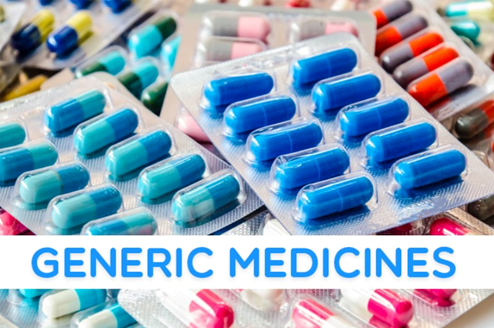The cost of cheap drugs
Lack of information about effects of unbranded generic medicines constricts patients’ freedom of choice.
Relevance
- GS Paper 3 Awareness in the fields of IT, Space, Computers, robotics, nano-technology, bio-technology and issues relating to intellectual property rights.
- Science and Technology- developments and their applications and effects in everyday life.
- Tags: #pharmaceutical #generic #india #currentaffairs #upsc.
Why in the News?
In today’s consumer-driven world, brands hold a significant sway over people’s choices. The term “brand” encompasses a wide array of factors, including patents, copyrights, trademarks, and designs, which together create a distinctive identity for products. Brands, especially in the realm of pharmaceuticals, are often equated with quality and trustworthiness. However, the dynamics change when it comes to generic drugs, where the cost of unbranded alternatives is significantly lower.
The Power of Brands
- Brands have an undeniable influence on consumer behavior. They serve as markers of quality and reliability, differentiating one product from another.
- The higher the perceived quality of a brand, the more consumers are willing to pay for it.
- A classic example is the mobile phone market, where companies like Samsung, Vivo, Apple, and Xiaomi have established themselves as top-tier brands, attracting loyal customers. The association of brands with quality is a fundamental aspect of consumer psychology.
Freedom of Choice in Pharmaceuticals
- While consumers typically make informed choices when purchasing branded products, the healthcare industry often operates under different rules.
- The pharmaceutical sector has faced criticism for a lack of transparency, unethical practices, and high costs. The existence of information asymmetry in the pharmaceutical market hinders patients’ ability to make well-informed choices.
- This issue is further exacerbated when considering the costs of healthcare, particularly when patients must pay for medicines out-of-pocket.
Categories of Medicines
Medicines can be broadly classified into three categories:
- Patented, brand-name drugs.
- Off-patent, generic drugs produced by reputable companies.
- Off-patent, unbranded generic drugs.
In most cases, perfect monopolies do not exist, allowing for some choice and substitution between these categories. These options can differ not only in terms of price but also in potential variations in side effects and overall quality.
Quality Concerns
- In addition to concerns surrounding pharmaceutical giants and their practices, the distribution of medicines is another critical issue.
- Bhagirath Palace, a wholesale market for medicines and medical equipment in Delhi, is emblematic of problems in the distribution chain. Scandals involving tax evasion, spurious and substandard drugs, temperature control failures, and a lack of quality controls have shaken the public’s trust.
Manufacturing Standards
- Manufacturing standards, as defined by Good Manufacturing Practices (GMP), play a pivotal role in ensuring the quality and safety of drugs.
- The pharmaceutical industry has been aware of GMP since 1988, yet a significant number of Micro, Small, and Medium Enterprises (MSMEs) remain non-compliant.
- The enforcement of GMP standards has been lax, with promises of mandatory compliance lingering for years. The lack of proper enforcement further exacerbates concerns about the quality of medicines in the market.
Substandard and Spurious Drugs
- One of the key challenges in the pharmaceutical industry is the prevalence of substandard and spurious drugs.
- Substandard drugs may not meet the required quality standards and could potentially have varying side effects. Spurious drugs, on the other hand, are counterfeit or fake, posing serious health risks.
- The extent of these issues, as reported by the Mashelkar Committee in 2003, ranged from 0.24 to 10.64 percent for substandard drugs and 0.24 to 0.47 percent for spurious drugs.
The Push for Unbranded Generics
- Given the issues surrounding branded pharmaceuticals and the quality of drugs, the push for unbranded generic medicines raises important questions.
- Unbranded generics are often cheaper, but at what cost to patients’ health? The focus on price alone fails to consider the broader implications of substandard drugs on healthcare costs.
- With information asymmetry, patients are unable to make truly informed choices. The proposal to mandate doctors to prescribe only unbranded generics is, therefore, a matter of contention.
The cost of cheap drugs is a multifaceted issue that extends beyond the price tag. The influence of brands in the pharmaceutical sector, coupled with concerns about the quality of medicines and their distribution, presents a complex challenge. Achieving a balance between affordability and quality in healthcare remains an ongoing battle that requires the concerted efforts of regulators, pharmaceutical companies, healthcare professionals, and patients alike.
|
Way Forward
Intellectual Property Rights (IPR) Rules in Pharma Intellectual Property Rights in the pharmaceutical sector primarily revolve around patents, trademarks, copyrights, and data exclusivity. Here’s a brief overview:
|
Sources: Indian Express
Mains Question
“Discuss the challenges and implications of promoting unbranded generic medicines in the Indian healthcare system. How can policymakers strike a balance between affordability and the quality of pharmaceuticals while ensuring patient safety and informed choices? Provide insights into the role of branding and manufacturing standards in this context.”




